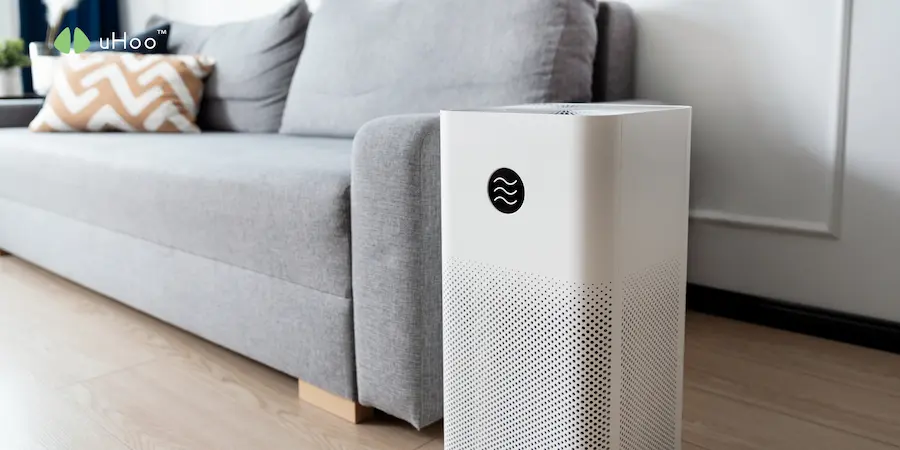For anyone looking to breathe easier and foster a healthier living environment, particularly if you or your family members suffer from allergies, asthma, or simply want to improve overall wellness, choosing the right air purifier is a crucial step.
With a myriad of options on the market though, understanding the different types of air purifiers and what they’re best suited for can seem daunting. This guide will break down the primary technologies and help you identify the perfect air purification solution for your specific home needs.
Key Factors When Choosing the Right Air Purifier
Before diving into specific types, consider these crucial factors when choosing the right air purifier:
- Room Size (CADR): Air purifiers are rated by their Clean Air Delivery Rate (CADR), which indicates how quickly they can remove smoke, dust, and pollen from a room. Match the purifier’s CADR to the square footage of your room for optimal performance. A higher CADR means faster air cleaning.
- Filter Type: The heart of any air purifier lies in its filtration system. Different filters target different pollutants.
- Noise Level: Especially important for bedrooms or living areas, check the decibel (dB) rating. Some purifiers offer “sleep modes” for quieter operation.
- Maintenance and Costs: Factor in the cost and frequency of filter replacements. Some filters are washable, while others are disposable.
- Energy Efficiency: Look for ENERGY STAR-certified models to save on electricity bills.
Understanding the Main Types of Air Purifiers
Most effective home air purifiers employ a multi-stage filtration system, combining different technologies to tackle a broad spectrum of pollutants. Here are the most common and effective types you’ll encounter:
- HEPA Air Purifiers (High-Efficiency Particulate Air)
- How they work: This is the gold standard for particle removal. A “True HEPA” filter is designed to capture at least 99.97% of airborne particles as small as 0.3 microns. They work by trapping particles as air is forced through a dense, pleated mat of fibers.
- What they’re good for:
- Allergy and Asthma Sufferers: Excellent for removing common allergens like pollen, pet dander, dust mites, and mold spores.
- Dust Reduction: Significantly reduces floating dust in the air.
- Smoke Particles: Effective against fine particulate matter (PM2.5) from wildfire smoke, tobacco smoke, and cooking fumes.
- Best for: Bedrooms, living rooms, and any area where airborne particles are a primary concern.
- Activated Carbon Air Purifiers
- How they work: These filters use highly porous carbon granules that chemically adsorb (trap) gaseous pollutants and odors. Think of activated carbon as a sponge that soaks up molecules.
- What they’re good for:
- Odor Removal: Excellent for eliminating persistent smells from cooking, pets, garbage, or stale air.
- Chemical Filtration (VOCs): Effective at removing Volatile Organic Compounds (VOCs) that off-gas from paints, new furniture, cleaning products, and even certain plastics.
- Smoke: Helps to remove gaseous components of smoke, complementing HEPA filters for particulate removal.
- Best for: Kitchens, pet areas, newly furnished rooms, or homes with chemical sensitivities. Often paired with HEPA filters for comprehensive air cleaning.
- Combination/Multi-Stage Air Purifiers:
- How they work: The vast majority of effective home air purifiers combine a pre-filter (for large particles), a True HEPA filter, and an activated carbon filter. Some may add a UV-C light or an ionizer as an additional stage.
- What they’re good for:
- Comprehensive Air Cleaning: Offers the best all-around protection against both particles (allergens, dust, mold, viruses) and gaseous pollutants/odors (VOCs, smoke, smells).
- Tailored Solutions: You can find units that prioritize certain features (e.g., larger carbon filters for heavy odors, or UV-C for germ concerns).
- Best for: Most households seeking a robust solution for a wide range of indoor air quality issues.
Additional Technologies to Consider When Choosing the Right Air Purifier
- UV-C Light: Some purifiers include a UV-C lamp, designed to inactivate airborne bacteria, viruses, and mold spores by damaging their DNA.
- Good for: Those with concerns about airborne pathogens or mold.
- Ionizers: These release charged ions that attach to airborne particles, causing them to fall out of the air or stick to surfaces/collection plates.
- Good for: Enhancing particle removal. Caution: Ensure the model you choose is ozone-free, as ozone is a lung irritant.
Making Your Decision
When choosing the right air purifier, start by identifying your primary indoor air quality concerns. Are you battling severe allergies? Lingering pet odors? Or simply looking for general air purification? Once you pinpoint your main needs, you can narrow down your options based on filter types, CADR ratings for your room size, and desired features like quiet operation or smart connectivity.
Ultimately, bringing an air purifier into your home is an investment in healthier living, providing a breath of fresh, clean air for you and your family. And to truly understand and optimize your indoor air quality, ensuring your air purifier is performing at its best and addressing the specific pollutants present, a uHoo air quality monitor can improve your IAQ even more by giving you real-time, comprehensive data on what’s in your air.



